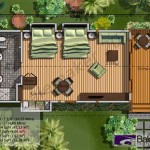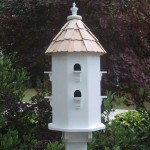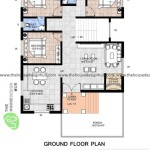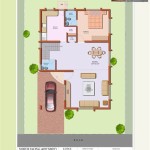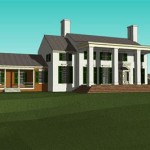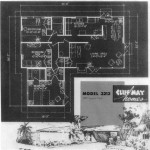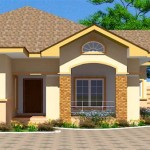House Plan Front Elevation Design: A Comprehensive Guide
The front elevation of a house plan is the face it presents to the world. It is the first impression, influencing curb appeal and setting the tone for the architectural style and overall aesthetic of the home. A well-designed front elevation not only enhances the visual appeal of the property but also contributes to its value and marketability. Understanding the principles and elements involved in front elevation design is crucial for architects, builders, and homeowners alike.
This article provides a comprehensive guide to house plan front elevation design, exploring various aspects including architectural styles, design elements, materials, and considerations for creating a visually appealing and functional facade. We will delve into the importance of proportion, balance, and symmetry, and discuss how these principles can be applied to create a harmonious and inviting front elevation.
Key Principles of Front Elevation Design
Several key principles underpin effective front elevation design. These principles govern how the various elements of the facade are arranged and how they interact with each other to create a cohesive and aesthetically pleasing whole. Ignoring these principles can result in a design that is disjointed, unattractive, or simply unharmonious.
Proportion: Proportion refers to the relative size and scale of different elements within the elevation. Achieving proper proportion is essential for creating a sense of balance and visual harmony. For example, the size of the windows should be proportional to the size of the walls and the overall scale of the house. An overly large window on a small house will appear disproportionate and visually jarring. Architects often use mathematical ratios, such as the Golden Ratio, to guide their decisions on proportion.
Balance: Balance in front elevation design refers to the distribution of visual weight. A balanced elevation feels stable and grounded. There are two main types of balance: symmetrical and asymmetrical. Symmetrical balance is achieved when elements on either side of a central axis are mirrored, creating a formal and traditional look. Asymmetrical balance, on the other hand, is achieved through the arrangement of different elements that have equal visual weight, creating a more informal and contemporary feel. Achieving asymmetrical balance requires careful consideration of the size, shape, and placement of various architectural features.
Symmetry: Symmetry, often closely associated with balance, involves the mirroring of elements around a central point. Symmetrical designs tend to be formal, classic, and predictable. While symmetry can create a sense of order and stability, it can also feel static or uninspired if not executed carefully. Breaks in symmetry, such as a prominent entryway on one side or a carefully placed window, can add interest and dynamism to an otherwise symmetrical design.
Essential Elements of Front Elevation Design
The front elevation of a house is composed of several key elements that work together to define its character and appearance. These elements include the roofline, windows, doors, siding, porch, and landscaping. Each element plays a crucial role in the overall design and should be carefully considered.
Roofline: The roofline is a dominant feature of the front elevation and significantly impacts the overall style of the house. Different roof styles, such as gable, hip, shed, and mansard, contribute to different architectural aesthetics. The slope of the roof, the overhang, and the presence of dormers also affect the visual impact of the front elevation. A well-designed roofline complements the overall architectural style and provides visual interest.
Windows: Windows are essential for both functional and aesthetic reasons. They provide natural light and ventilation while also contributing to the visual appeal of the front elevation. The size, shape, and placement of windows can dramatically alter the look of a house. Different window styles, such as double-hung, casement, awning, and picture windows, offer different advantages and can be chosen to suit the architectural style and functional requirements of the house. Mullions and muntins, the structural elements that divide the window panes, also contribute to the overall aesthetic and can be customized to match the desired style.
Doors: The front door is the focal point of the front elevation and is a key element in creating a welcoming and inviting entrance. The style, color, and material of the front door should complement the overall architectural style of the house. Adding sidelights or a transom window above the door can enhance the entrance and allow more natural light to enter the home. The hardware, such as the doorknob, knocker, and house numbers, should also be carefully chosen to complement the door and the overall design.
Siding: Siding is the exterior cladding that covers the walls of the house and protects it from the elements. Different siding materials, such as wood, brick, stone, vinyl, and fiber cement, offer different aesthetic and performance characteristics. The color, texture, and pattern of the siding significantly impact the overall look of the front elevation. The choice of siding should be based on factors such as cost, durability, maintenance requirements, and aesthetic preference. Mixing different siding materials can add visual interest and dimension to the front elevation.
Porch: A porch is an extension of the front elevation that provides a transitional space between the interior and exterior of the house. Porches can be open or screened, and they can vary in size and style. A well-designed porch can enhance the curb appeal of the house and provide a comfortable outdoor living space. The design of the porch should be integrated with the overall architectural style of the house, and it should be proportional to the size of the house.
Landscaping: Landscaping is an integral part of the front elevation and can significantly enhance its curb appeal. Well-chosen plants, shrubs, and trees can soften the lines of the house, add color and texture, and create a welcoming atmosphere. The landscaping should be carefully planned to complement the architectural style of the house and to enhance its visual appeal. Factors to consider when planning landscaping include the climate, soil conditions, and maintenance requirements.
Architectural Styles and Front Elevation Design
Different architectural styles have distinct characteristics that influence the design of the front elevation. Understanding the key features of different styles is essential for creating a cohesive and authentic design.
Colonial: Colonial-style houses are characterized by their symmetrical facades, simple rooflines, and evenly spaced windows. The front door is typically located in the center of the facade and is often flanked by sidelights or pilasters. Common materials include brick, wood siding, and clapboard. The emphasis is on balance, order, and formality.
Victorian: Victorian-style houses are known for their ornate details, asymmetrical facades, and steeply pitched roofs. Features such as turrets, gables, bay windows, and decorative trim are common. The front elevation often includes a large porch with intricate railings and columns. Victorian houses are typically painted in bright, contrasting colors to highlight their architectural details.
Craftsman: Craftsman-style houses are characterized by their low-pitched roofs, wide eaves, and exposed rafters. The front elevation often includes a large porch with tapered columns. Natural materials such as wood, stone, and brick are commonly used. The emphasis is on simplicity, functionality, and handcrafted details.
Modern: Modern-style houses are characterized by their clean lines, minimalist design, and emphasis on functionality. The front elevation often features large windows, flat roofs, and simple geometric shapes. Materials such as concrete, steel, and glass are commonly used. The emphasis is on simplicity, openness, and a connection to the outdoors.
Ranch: Ranch-style houses are characterized by their single-story design, low-pitched roofs, and long horizontal lines. The front elevation often includes a large picture window and a simple porch. Ranch houses are typically built on a slab foundation and are designed for easy living. The style emphasizes informality and functionality.
Beyond these, numerous other architectural styles exist, each with its unique front elevation characteristics. Understanding the nuances of each style allows for informed design decisions that create a cohesive and aesthetically pleasing home.

29x48 House Plan With 3d Front Elevation Design N Home Plans

35x45 3bhk House Plan With Front Elevation 35 0 X45 Home Map Go Small Design

Front Elevation Small House Design Exterior Architecture

30 Normal House Front Elevation Designs Trending In 2024

House Front Elevation Designs 2024 Wall Homedecorideas Housefrontel Small Design Exterior

30 Normal House Front Elevation Designs Trending In 2024

G 2 Independent Floor House Plan Elevation Design At Rs 4000 Sq Ft In Ghaziabad

16 Best Normal House Front Elevation Designs

Azalea Coastal Style House Plan Sater Design Collection

47x40 Modern Duplex Front Elevation Design 1880 Double Floor House Plan 47 By 40

